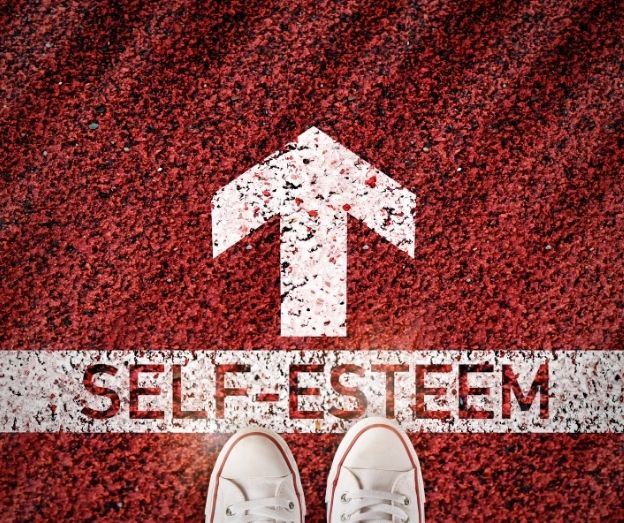What is Self-Esteem? Understanding Its Importance and Impact on Well-Being
Self-esteem is a crucial part of how individuals view themselves and their worth. It relates to the thoughts and feelings a person has about their own qualities, which can significantly impact their lives. Many people struggle with understanding and managing their self-esteem, which can lead to a range of emotional challenges.
Self-esteem is influenced by various factors, including personal experiences and social interactions. It can shift over time and affect how a person makes decisions, interacts with others, and approaches their goals. Exploring self-esteem can help individuals recognize their strengths and areas for growth, leading to healthier self-perceptions.
Understanding self-esteem is necessary for personal development. By learning more about its components and how to improve it, people can enhance their overall well-being and satisfaction in life.
Key Takeaways
- Self-esteem influences feelings of worth and self-acceptance.
- Several factors can impact an individual’s level of self-esteem.
- Improving self-esteem is a journey that benefits overall well-being.
Defining Self-Esteem
Self-esteem refers to the beliefs and feelings one has about themselves. It plays a crucial role in how individuals view their worth and abilities. Understanding its history and the various psychological theories surrounding it can provide valuable insight into this important concept.
Historical Evolution of the Concept
The idea of self-esteem has changed over time. In the early 20th century, psychologists focused on self-worth as part of broader discussions on human psychology. Notable figures like William James highlighted the importance of self-perception in his work.
By the mid-20th century, self-esteem gained more attention. Psychologist Abraham Maslow, known for his hierarchy of needs, placed self-esteem as a fundamental human need. His views emphasized that feeling valued is essential for personal development.
As research continued, the understanding of self-esteem expanded. It became clear that self-esteem is influenced by external factors, such as relationships and societal expectations, impacting one’s mental health.
Psychological Perspectives
Psychological theories shape the understanding of self-esteem. One major perspective is the cognitive theory, which suggests that thoughts about oneself can affect feelings of self-worth. Cognitive-behavioral approaches often explore how negative self-perceptions can lead to low self-esteem.
Another important viewpoint comes from social psychology. Research shows that social interactions significantly influence self-esteem. Feedback from peers, family, and society can either boost or harm an individual’s self-image.
Additionally, the concept of self-esteem can manifest differently among cultures. Some cultures prioritize community and relationships, while others emphasize individual achievement. This cultural context plays a crucial role in shaping how people view themselves.
Components of Self-Esteem
Self-esteem is made up of various components that help shape how individuals view themselves. Two key components are self-competence and self-worth. Understanding these components is essential for recognizing the different aspects of self-esteem.
Self-Competence
Self-competence refers to how capable an individual feels in their abilities. This includes skills, talents, and other factors that contribute to a sense of effectiveness. People with high self-competence tend to have confidence in their capabilities.
They believe they can accomplish tasks successfully. This feeling often leads to more significant achievements and personal growth. On the other hand, low self-competence can result in self-doubt, anxiety, and a reluctance to take on challenges.
Developing self-competence involves setting achievable goals, gaining new skills, and celebrating successes. This way, individuals can build a positive view of their abilities.
Self-Worth
Self-worth is the recognition that one is valuable and deserving of respect and love. It goes beyond skills or achievements. A person with a strong sense of self-worth appreciates their inherent value as a human being.
Factors that influence self-worth include personal experiences, relationships, and beliefs. People who value themselves tend to form healthier relationships with others. They are also more resilient in facing life’s challenges.
Conversely, low self-worth can lead to negative self-talk and a feeling of unworthiness. Building self-worth involves practicing self-acceptance and surrounding oneself with supportive individuals. Engaging in self-care and reflecting on personal strengths can reinforce this vital component of self-esteem.
Influences on Self-Esteem
Self-esteem is shaped by various factors throughout a person’s life. Key influences include family dynamics, social interactions, cultural context, and personal experiences. Understanding these influences can help individuals recognize and improve their self-esteem.
Family Influence
Family plays a crucial role in developing self-esteem. Parents’ attitudes significantly impact how children view themselves. Supportive parents who encourage and praise their children often help build a positive self-image. In contrast, critical or neglectful families can lead to feelings of unworthiness.
Communication styles within the family also matter. Open conversations about feelings promote emotional health. When children feel accepted and valued, their self-esteem grows. Family conflicts or dysfunction can hinder this growth, leading to low self-esteem and insecurity.
Social and Cultural Factors
Social influences, such as friendships and peer relationships, greatly affect self-esteem. Positive friend groups can boost confidence, while negative associations can lead to feelings of inadequacy. Bullying or exclusion among peers can have a lasting impact.
Cultural factors also play a role. Societal standards related to beauty, success, and behavior shape how individuals feel about themselves. In cultures that emphasize achievement, individuals may feel pressured to meet high standards, influencing their self-esteem. Understanding these dynamics is vital for fostering a healthier self-image.
Personal Experiences
Personal experiences are significant in shaping self-esteem. Achievements, failures, and life events contribute to how individuals view themselves. Success in areas such as academics, sports, or relationships can enhance self-esteem.
Conversely, failures or setbacks can lead to negative self-perceptions. For example, repeated failure in school can create feelings of inadequacy. How individuals respond to these experiences matters. Resilience and a positive outlook can help overcome challenges, promoting healthier self-esteem.

Assessing Self-Esteem
Understanding self-esteem involves both qualitative and quantitative assessments. These methods provide valuable insights into how individuals perceive their worth.
Qualitative Assessments
Qualitative assessments focus on personal reflections and narratives. They help understand self-esteem through interviews, open-ended questions, or journals.
These methods explore thoughts, feelings, and experiences that shape self-esteem. For instance, a therapist might ask an individual to describe moments when they felt confident or insecure.
Participants can also share how they handle criticism or praise. This approach provides deeper insights into the individual’s self-image. It captures nuances that numbers alone cannot convey.
Reflecting on personal stories enables individuals to identify patterns in their self-esteem. They may recognize key influences, such as family dynamics or social interactions, that affect their beliefs about themselves.
Quantitative Measures
Quantitative measures use standardized tests to evaluate self-esteem levels. These tests often involve rating scales and structured questionnaires.
One widely used tool is the Rosenberg Self-Esteem Scale, which allows individuals to rate their agreement with various statements about themselves.
Scores from these tests provide a clear picture of self-esteem levels. Higher scores typically indicate healthier self-esteem, while lower scores may suggest a need for improvement.
These assessments are useful in research and clinical settings. They allow for comparisons across different groups by age, gender, and culture.
They also help track changes over time, giving insights into the effectiveness of interventions aimed at boosting self-esteem.
Improving Self-Esteem
Improving self-esteem involves various methods that can help individuals build a healthier view of themselves. These approaches can include therapeutic interventions, practical self-help strategies, and the power of positive affirmations. Each plays a significant role in fostering self-worth and confidence.
Therapeutic Approaches
Therapy can be an effective way to enhance self-esteem. Cognitive Behavioral Therapy (CBT) is commonly used to change negative thought patterns. A therapist helps individuals identify and challenge unhelpful beliefs about themselves.
Another approach is Acceptance and Commitment Therapy (ACT). This focuses on accepting feelings rather than fighting them. It encourages individuals to take action aligned with their values. Both approaches foster self-acceptance and personal growth.
Group therapy is also beneficial. Sharing experiences with others can provide support and reassurance. It often helps reduce feelings of isolation and encourages positive self-reflection.
Self-Help Strategies
Self-help strategies can empower individuals to improve their self-esteem independently. Regular exercise can boost mood and energy levels. Engaging in activities one enjoys also creates a sense of accomplishment.
Setting small, achievable goals can help. Completing tasks, even minor ones, builds confidence. Journaling can also be effective. Writing about positive daily experiences reinforces a positive self-image.
Maintaining good nutrition is important too. A balanced diet contributes to physical health, which can influence mental well-being. Participants should also practice good sleep hygiene to ensure adequate rest.
Role of Positive Affirmations
Positive affirmations are statements that promote self-acceptance and confidence. They help replace negative self-talk with empowering messages. Examples include “I am enough” and “I am capable of achieving my goals.”
Repeating affirmations daily can have lasting effects. They help individuals internalize these positive beliefs over time. Writing them down and displaying them in visible areas can serve as constant reminders.
Engaging in mindfulness practices alongside affirmations can enhance their effectiveness. Mindfulness helps individuals focus on the present, reducing anxiety about past failures or future concerns. Together, they create a stronger foundation for self-esteem.
Frequently Asked Questions
Self-esteem plays a critical role in how individuals view themselves and their abilities. It impacts personal growth, communicates their value to others, and can affect mental health and relationships. Here are some key questions regarding self-esteem.
Why is self-esteem important for personal development?
Self-esteem is essential for personal development because it influences motivation and goal setting. When individuals believe in their worth, they are more likely to pursue opportunities and challenges. High self-esteem fosters resilience, allowing them to handle setbacks and learn from failures.
How can one improve their self-esteem in daily life?
To improve self-esteem in daily life, individuals can practice positive self-talk and set achievable goals. Regularly recognizing personal achievements, no matter how small, boosts self-worth. Surrounding oneself with supportive people who provide encouragement also contributes positively to self-esteem.
What is the psychological impact of high versus low self-esteem?
High self-esteem is associated with greater life satisfaction, better mental health, and stronger relationships. Conversely, low self-esteem can lead to feelings of inadequacy, anxiety, and depression. This difference significantly affects how a person interacts with the world and faces challenges.
What are the different types of self-esteem recognized by psychologists?
Psychologists generally recognize two main types of self-esteem: realistic and inflated. Realistic self-esteem is rooted in genuine self-assessment and acknowledgment of strengths and weaknesses. Inflated self-esteem, however, can lead to overconfidence and unrealistic self-views, often masking underlying insecurities.
How do upbringing and life experiences contribute to the development of self-esteem?
Upbringing and life experiences play critical roles in shaping self-esteem. Positive reinforcement from caregivers can build confidence, while negative experiences, such as criticism or neglect, can diminish it. Social interactions and peer relationships also influence how one views themselves over time.
What strategies are effective for building self-esteem in children and teenagers?
Effective strategies for building self-esteem in children and teenagers include providing consistent praise for effort and achievements. Encouraging them to pursue hobbies and interests helps cultivate a sense of identity. Teaching coping skills for handling failure and setbacks further supports their self-worth development.




